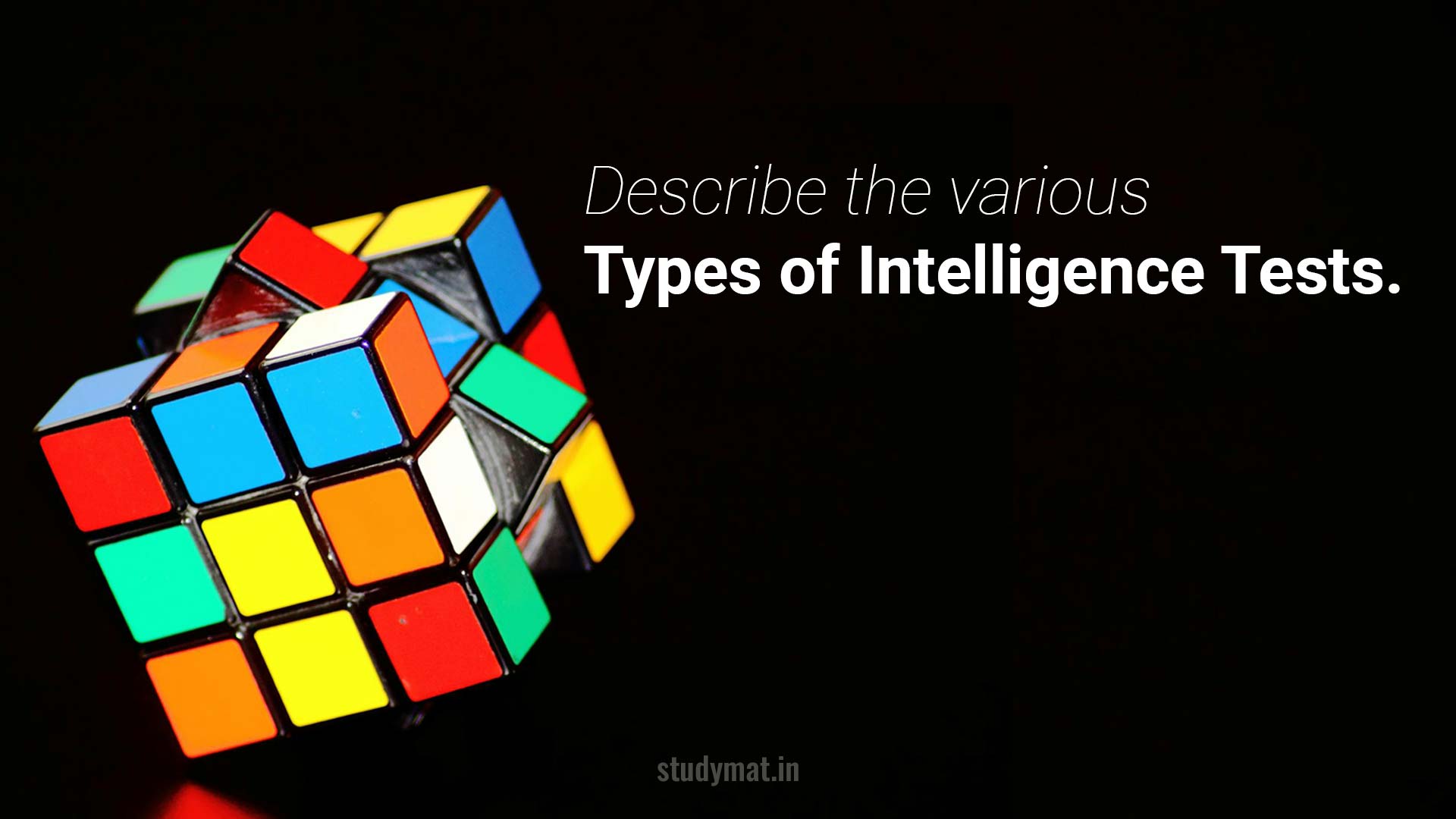In this article, we will Describe the various Types of Intelligence Tests.
What are the different Types of Intelligence Tests?
There are several types of intelligence exist, some of which are outlined below.
1. Stanford-Binet Test:
Terman and Merrill revised the Stanford Binet in 1937 to create the Revised Stanford-Binet Intelligence Scale, which included two alternate forms, L and M, each with 129 items.
After Terman’s death in 1960, Merrill led the third revision, resulting in the Stanford-Binet Intelligence Scale, Form L-M, which introduced a deviation intelligence quotient with a normative mean of 100 and a standard deviation of 16.
In 1986, the fourth revision, the Stanford-Binet Intelligence Scales (SB4), retained much of the content of the Form L-M edition, covering the same age range and retaining many items and tasks.
The SB4 introduced a hierarchical model of intelligence, assessing verbal reasoning, abstract/visual reasoning, quantitative reasoning, and short-term memory, providing composite scores and establishing a basal level using the Vocabulary subtest.
The latest version, the Stanford-Binet Intelligence Scales–Fifth Edition (SB5), adheres strictly to the Cattell-Horn-Carroll (CHC) cognitive theory and differs significantly from the SB4 in theoretical structure and psychometric design.
The SB5 assesses intellectual ability in individuals aged two to 89 years, containing 10 subscales covering general cognitive functioning, verbal and nonverbal intelligence, and five CHC factors formed into groups along verbal/nonverbal measures.
The SB5 measures five CHC factors: Fluid Reasoning, Knowledge, Quantitative Reasoning, Visual-Spatial Processing, and Working Memory, yielding an overall estimate of cognitive functioning known as the Full Scale Intelligence Quotient (Roid, 2003), along with nonverbal contrast and abbreviated versions.
2. Wechsler Intelligence Scale/Test:
The first Wechsler intelligence scale was introduced in 1939, followed by successive revisions for adults (16-90 years), school-going children (6-16 years), and pre-schoolers (2½-7 years).
Since their inception, Wechsler intelligence scales have been widely used by clinical and school psychologists to assess cognitive abilities across different age groups. Wechsler conceptualized intelligence as both a global entity and a collection of specific abilities that vary in quality.
According to Wechsler (1944), intelligence involves purposeful action, rational thinking, and effective interaction with the environment. He also argued that intelligence comprises distinct elements or abilities that can be measured by various tests. Factor analysis of intelligence test scores supports the idea that intelligence consists of specific abilities grouped into higher-order domains.
FAQ:
- How many different Intelligence Tests are there?
- Discuss Types of Intelligence Tests with examples.
- Discuss Types of Intelligence Tests in psychology.
Follow Us:
If you like this article, you can Follow us on Facebook.
Also, you can Join our Official Facebook Group for QnA Sessions and Discussions with the worldwide IGNOU community



